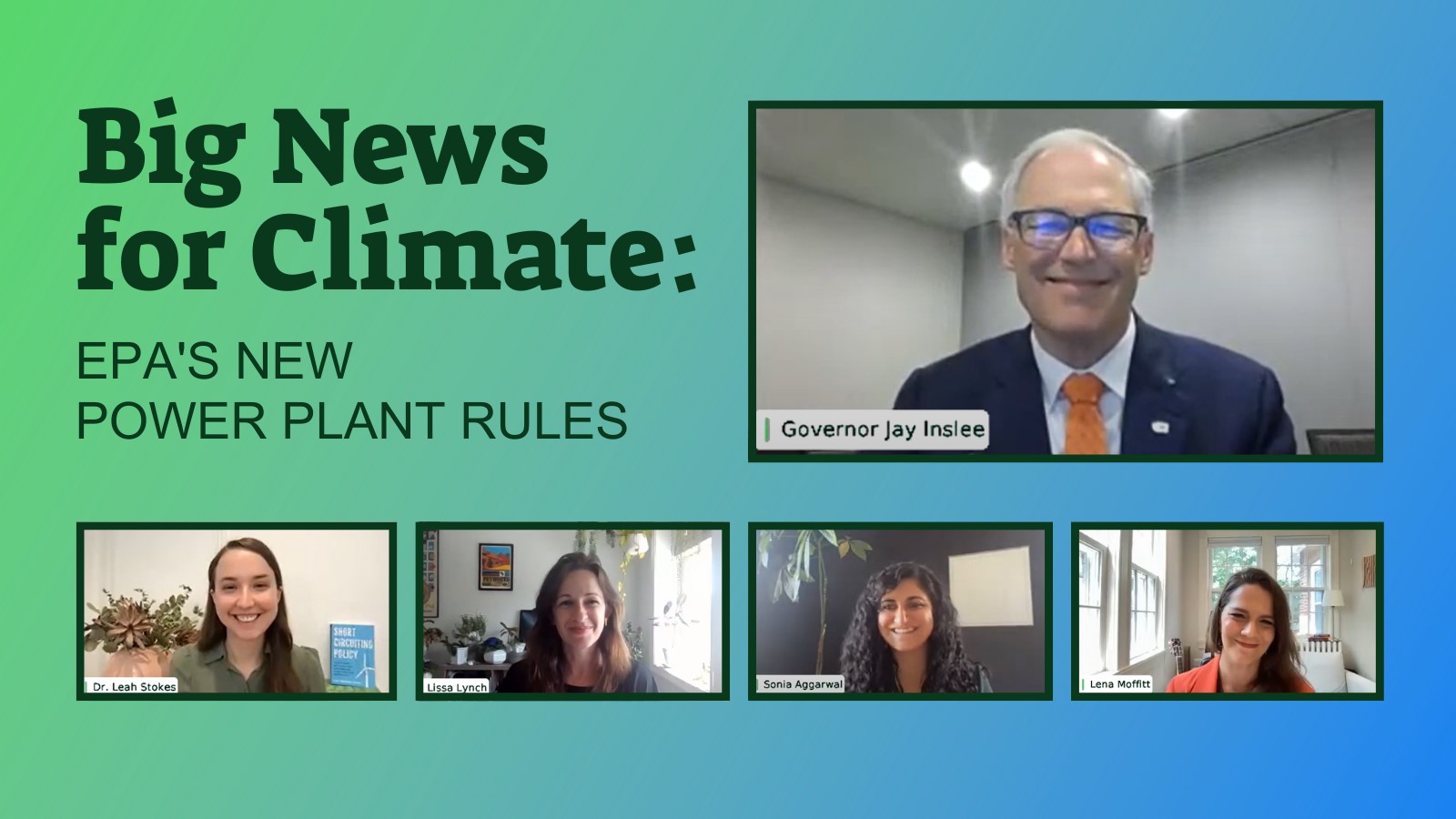Aggarwal: To contextualize a little bit, electricity emissions in the United States have already dropped about 35 percent since 2005. And the Inflation Reduction Act has really rocketed us into this new economic reality for cheap, clean electricity. Energy Innovation’s analysis of the Inflation Reduction Act suggested that emissions would drop by about 75 percent below 2005 in 2030 if utilities make the most of all of these economic choices that we now have to reduce electricity costs for customers, improve public health, and deliver a much more modern electricity system. So this one law is actually going to triple the rate of economy-wide decarbonization in this country, driven in large part by the electricity sector reductions contained in this bill.
So, where do the EPA rules come in on all of this? So, of course, the administration has been advancing a suite of updates to standards in the electricity sector and in other sectors like the transportation sector, to accommodate the new reality that we are living in because we really can do more now. We know what the technologies are. They're getting cheaper and cheaper, and we know that we can operate systems reliably with very high shares of these clean energy technologies. So the 111 rules [power plant rules] provide an important backstop to ensure that the utilities, in fact, make these sound economic choices for their customers, and that we do see the public health benefits in our communities from this very cool suite of policies that we are now getting to live in.
Moffitt: These regulations will put limits on carbon pollution from power plants that don't exist right now. It is really just astounding to take a step back and think power plants are one of the key drivers of climate change, and yet right now, power plants can spew as much carbon pollution as they want into our atmosphere and into our communities. And that's no longer an option with this proposal. And that is a really big deal that the administration has used throughout authority. Hopefully, successfully, for the first time.
2. Breaking down the nitty-gritty: What do these rules say?
Lynch: It helps to start with last year's West Virginia decision. The Supreme Court defined the bounds of EPA's authority, and they essentially drew the lines. They said what's clearly outside of those lines is the Clean Power Plan approach that relied on shifting from dirtier fossil generation to cleaner energy. I think a lot of us thought that that was the best way to decarbonize the industry. That's off the table now, at least for purposes of how EPA goes about setting these standards.
So what's still inside those lines that the Supreme Court drew are measures that reduce pollution on site at the power plants. And for fossil power plants to reduce CO2 emissions, there's really only a few options that fit that bill: Those include co-firing with a lower carbon fuel or installing carbon capture. So in this proposal, EPA is doing what it can using the options available and staying within those lines that the Supreme Court drew.
Starting with gas plants, for new gas plants, the proposed standard would apply to any plants that start construction from the date this proposal gets published onward. And the proposal divides those new gas units into subcategories based on how often they're going to operate. So for the subcategory of units that will operate the most often, which EPA calls baseload plants, they set a standard based on 90 percent carbon capture and storage by 2035.
And then they also offer an alternative pathway for complying with an equivalent standard by co-firing with clean hydrogen starting at 30 percent hydrogen by 2032 and ramping up to 96 percent hydrogen by 2038. They set less stringent standards for an intermediate subcategory of plants that would operate less frequently. That's based on partial co-firing with clean hydrogen, and then even less stringent standards for plants that operate only a small percentage of the time.
The standards phase in over time, so there are initial emission limits that would apply immediately based on the most efficient type of turbine available, and full compliance would be required by 2035 if you’re deploying CCS, and 2032-2038 if co-firing with hydrogen. And that's to give time for infrastructure to be built out. For the rest of the existing gas fleet, EPA is just taking comments on what the approach should be, and again, I think that's a place where we'd really like to see improvements.
For existing coal plants, the approach is a little bit different. EPA looks at the reality on the ground, that the coal fleet is really old, and a lot of those plants may retire over the next 10 or 15 years, totally independent of these new standards. And the cost effectiveness of installing new controls is really going to depend on how long a coal plant might continue to operate. So in light of those dynamics, EPA is proposing an emission limit based on 90 percent CCS for coal plants that are going to keep operating from 2040 and beyond. And that goes into effect starting in 2030.

